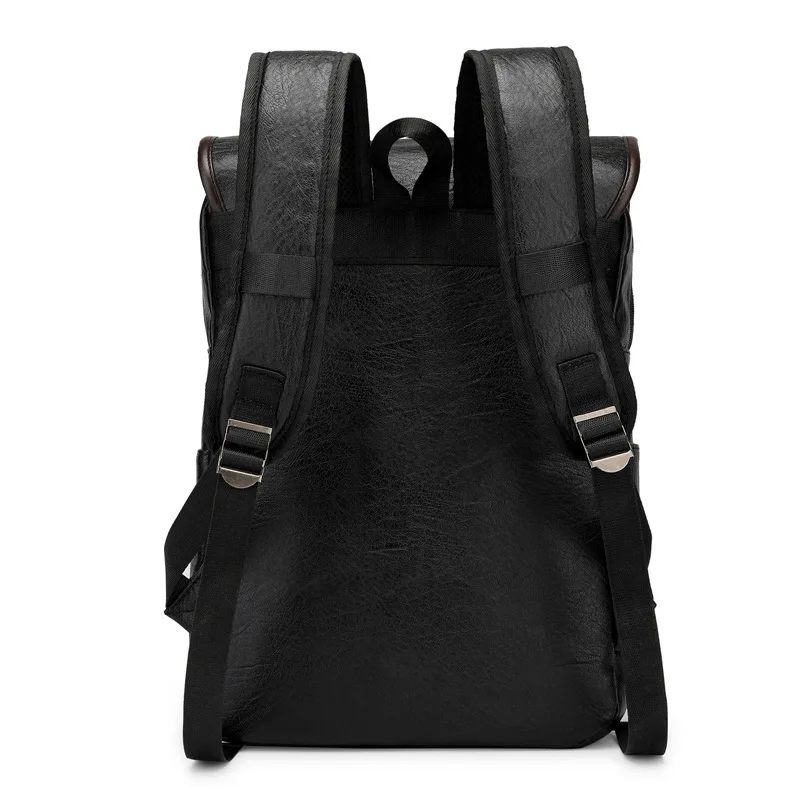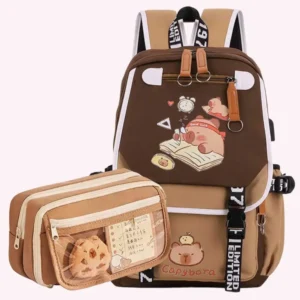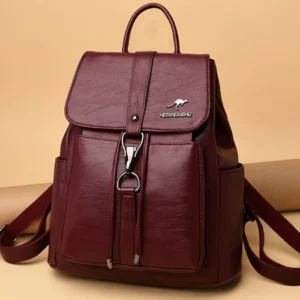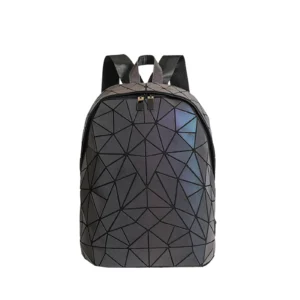Introduction: The Enduring Appeal of Leather Roll-Top Backpack Designs
A leather roll-top backpack combines the timeless appeal of premium leather with a distinctive folding closure system that offers both practical benefits and visual character. Unlike traditional backpacks with fixed zipper closures, these versatile carriers feature a top section that rolls down and secures with buckles, straps, or other fastening mechanisms, creating a weather-resistant seal while allowing for variable capacity.
The roll-top design traces its origins to maritime equipment and military packs, where protecting contents from the elements was paramount. These rugged, practical carriers have evolved from purely utilitarian outdoor gear into sophisticated urban accessories that maintain their functional DNA while embracing refined aesthetics.
What makes roll-top leather backpacks particularly appealing is their perfect marriage of form and function. The rolling mechanism creates a natural barrier against rain and debris, while simultaneously serving as a distinctive design element that sets these backpacks apart from conventional styles. As urban professionals increasingly seek versatile accessories that transition seamlessly between environments, the roll-top backpack has found its place as a practical solution that doesn’t sacrifice style.
The adaptable nature of roll-top designs provides another significant advantage: adjustable capacity. The same backpack can compact down for daily essentials or expand to accommodate extra items for overnight trips or grocery runs. This versatility, combined with proper leather conditioning and waterproofing, ensures these backpacks remain functional companions for years of daily use.
Understanding Roll-Top Design: Form Following Function
The Mechanics of the Roll-Top Closure System
The genius of the roll-top design lies in its elegant simplicity. The upper portion of the backpack extends beyond the main compartment, creating excess material that can be folded or rolled downward multiple times. This rolling action creates a seal that becomes increasingly weather-resistant with each fold, while simultaneously compressing the contents and securing them in place.
The closure system typically falls into three main categories:
- Buckle and strap closures: Traditional and visually striking, these use leather straps threaded through metal buckles to secure the roll. They provide excellent security but require more time to open and close.
- Hook clasps and quick-release systems: These balance security with convenience, allowing for faster access while maintaining the classic roll-top aesthetic.
- Magnetic closures: Modern interpretations that prioritize quick access, these often incorporate hidden magnetic elements that maintain clean lines while providing effortless operation.
The design advantages of roll-top backpacks extend beyond mere weather protection. Most designs allow for approximately 20-30% capacity variation depending on how tightly or loosely the top is rolled. This flexibility means a single backpack can serve multiple purposes throughout the day.
Another notable advantage is durability. With fewer zippers exposed to stress and elements in the main compartment, roll-top designs eliminate common failure points. The closure system distributes pressure evenly across the width of the opening rather than concentrating it along a zipper line.
Aesthetic Impact of Functional Design Elements
The roll-top closure creates a distinctive silhouette that immediately distinguishes these backpacks from standard designs. When fully loaded and rolled tightly, the backpack presents a streamlined, cylindrical top that flows naturally from the main body. As contents decrease, the roll becomes more pronounced, creating visual interest through the interplay of folded leather.
This inherently minimalist design draws attention to material quality and craftsmanship. Without complex closure systems cluttering the upper portion, the eye is naturally drawn to the leather’s texture and character, especially as it develops patina over time with ultimate guide conditioning techniques.
The design’s heritage connections also contribute to its emotional appeal. Roll-top backpacks evoke a sense of adventure and timeless utility, harkening back to expedition gear while functioning perfectly in contemporary urban environments. This ability to reference the past while serving present needs creates a unique aesthetic that transcends fleeting fashion trends.
Essential Design Elements and Features
Main Compartment Configuration and Access
The primary compartment of a leather roll-top backpack typically follows one of two design philosophies: a single large cavity that maximizes flexibility, or a thoughtfully subdivided space that enhances organization. Both approaches have merits depending on the user’s needs and preferences.
The top-loading design offers excellent protection for contents, but presents challenges for accessing items at the bottom of the bag. Quality designs address this through:
- Strategic depth-to-width ratios that prevent excessive “tunneling”
- Side or rear access zippers for reaching bottom contents
- Internal attachment points that prevent items from settling
- Semi-rigid backs that maintain shape even when partially filled
Capacity in daily-use leather rucksacks typically ranges from 18-28 liters (1100-1700 cubic inches), striking a balance between carrying capability and comfortable proportions. Larger travel-oriented designs may offer 30-40 liters (1830-2440 cubic inches) while maintaining the distinctive roll-top aesthetic.
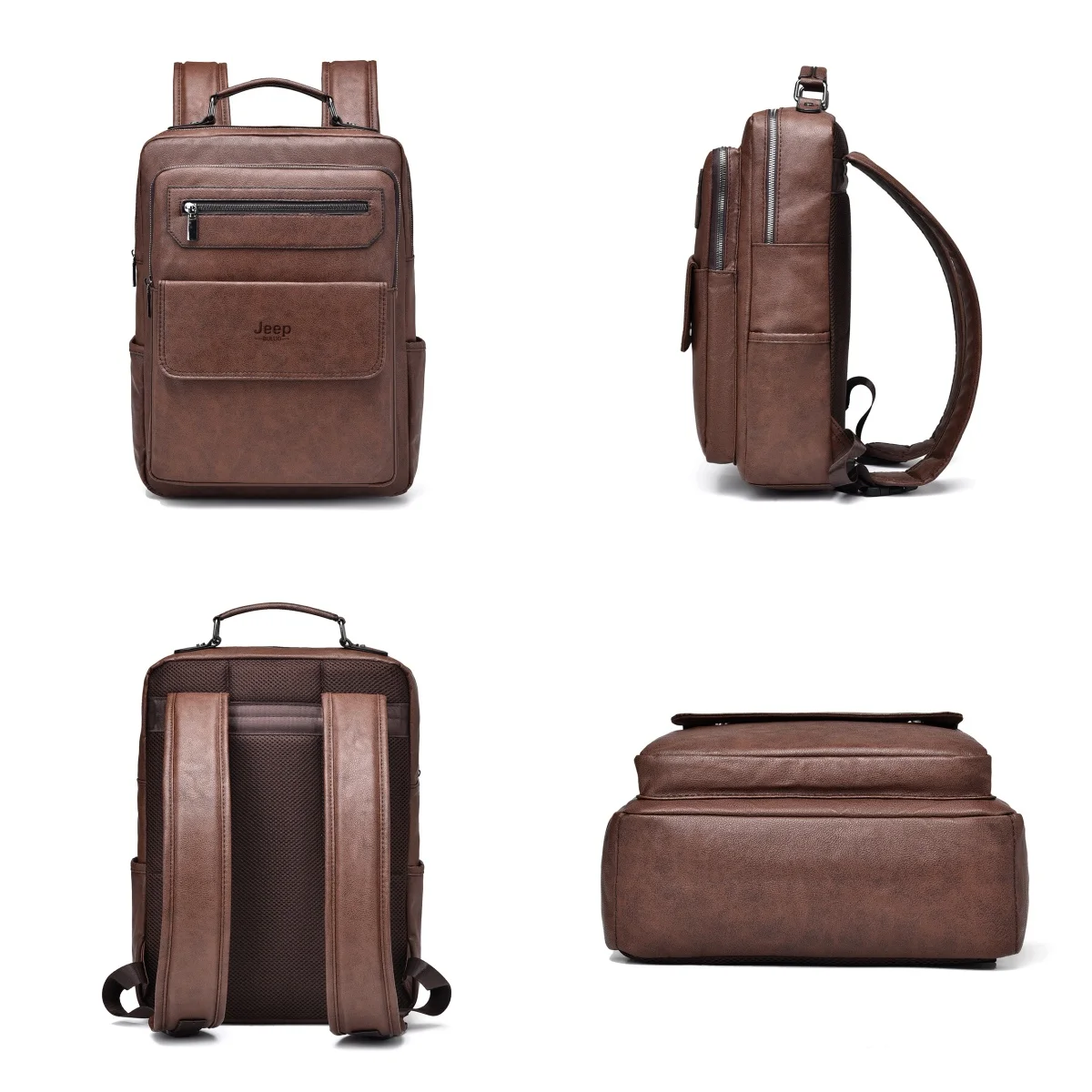
Internal Organization Systems
The interior organization of a roll-top backpack significantly impacts its daily usability. While the clean exterior projects minimalist appeal, the interior often reveals thoughtful organizational elements:
| Organization Level | Typical Features | Best For |
|---|---|---|
| Minimalist | Single laptop sleeve, 1-2 slip pockets | Users who prefer flexible space and use pouches |
| Moderate | Laptop sleeve, 3-4 pockets, pen holders, key clip | Most daily commuters and students |
| Comprehensive | Multiple padded dividers, zippered sections, RFID pocket | Business professionals, organized travelers |
Laptop protection represents a critical design element in contemporary backpacks. Premium roll-top designs feature padded sleeves that accommodate devices from 13-17 inches, with strategic placement that both protects the device and utilizes its flat shape to maintain the backpack’s structure.
The most effective designs balance organization with accessibility. Frequently used items deserve dedicated spaces near the top of the bag or in external pockets, while occasional-use items can be stored deeper in the main compartment. This hierarchy of access supports efficient daily use while maintaining the clean aesthetic that makes roll-top designs so appealing.
External Pockets and Accessibility Features
The exterior design of roll-top backpacks balances quick access with aesthetic cohesion. Strategic pocket placement enhances functionality without disrupting the backpack’s clean lines:
- Front pockets with weather-protected openings for frequently accessed items
- Side pockets for water bottles, designed to maintain the backpack’s silhouette
- Hidden rear pockets for valuables, often positioned against the wearer’s back for security
- Passport or transit card pockets within easy reach but concealed from view
Urban-focused designs typically feature more discreet, security-oriented external storage, while travel or outdoor-oriented models incorporate more visible and accessible options. The complete guide to waterproofing leather bags becomes particularly important for these external features, as they’re most exposed to the elements.
Carrying System Design for Comfort and Ergonomics
A sophisticated carrying system transforms a beautiful backpack into a daily companion that truly serves its owner. The most important elements include:
- Shoulder straps contoured to follow the natural slope of the shoulders, typically 2-2.5 inches (5-6.5 cm) wide for optimal pressure distribution
- Strategic padding that balances comfort with a sleek profile, avoiding unnecessary bulk
- Back panels designed with both support and ventilation in mind, often incorporating channels or perforations
- Load-lifter straps on larger models to adjust weight distribution based on contents
- Supplementary carrying options like top handles and side grips for versatile transport
Premium leather travel backpacks incorporate these ergonomic considerations without compromising their refined appearance, demonstrating that comfort and style need not be mutually exclusive.
Materials Selection in Premium Design
Leather Varieties and Their Design Implications
The leather chosen for a roll-top backpack profoundly influences its appearance, performance, and character development over time. Premium designs utilize specific leather varieties based on their unique properties:
Full-grain leather, derived from the top layer of the hide with its natural grain intact, offers superior strength, breathability, and character development. This premium material forms the foundation for heritage-quality backpacks that develop a rich patina reflecting their owner’s journey.
Top-grain leather, lightly corrected to remove minor imperfections, balances natural character with more consistent appearance. Its thinner profile reduces weight while maintaining good durability, making it suitable for designs that prioritize everyday wearability.
Specialty leathers like Crazy Horse (also called pull-up leather) feature wax-impregnated finishes that create dramatic color variation when bent or scratched. This “lived-in” appearance accelerates the character development process, making these leathers ideal for heritage-inspired designs.
The thickness of leather significantly impacts the backpack’s structure, with premium designs typically using 1.6-2.2 mm (4-5.5 oz) leather that balances durability with pliability. Thicker leather provides structure and longevity but adds weight, while thinner cuts reduce weight at the expense of natural structure.
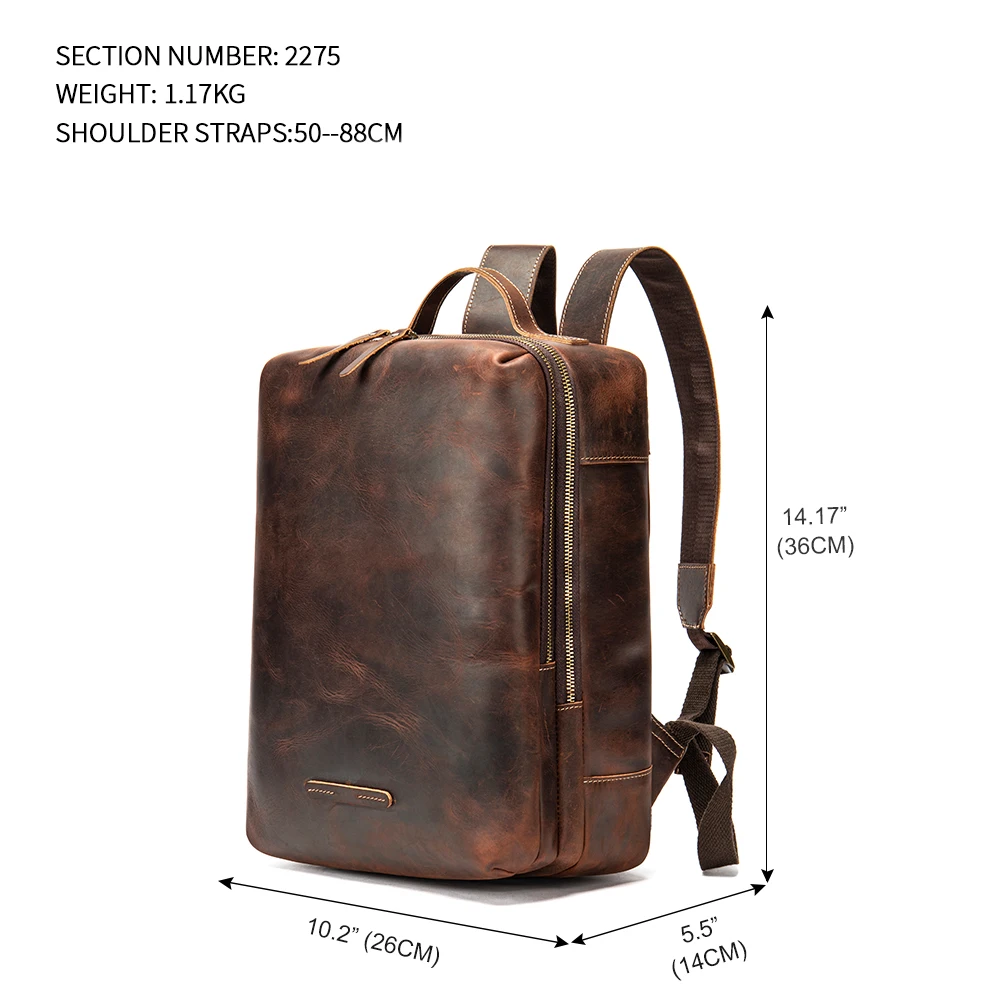
Interior materials also reflect thoughtful design choices. Cotton canvas provides a lightweight, breathable lining that complements leather’s natural properties, while synthetic linings offer enhanced water resistance for travelers. The best full-grain leather backpack designs consider these interior elements as carefully as the exterior leather.
Hardware Selection and Its Impact on Design Integrity
Hardware components—buckles, zippers, rivets, D-rings—form both functional touchpoints and visual accents in roll-top designs. Their selection requires balancing durability, weight, aesthetics, and tactile quality:
- Solid brass hardware offers exceptional durability with a distinctive weight and warm patina development that complements leather’s aging process
- Stainless steel provides corrosion resistance and a modern appearance with less weight than brass
- Aluminum components significantly reduce weight for travel-oriented designs but may show wear more quickly
Hardware finishes—antique, brushed, polished—should harmonize with the leather’s character and the overall design aesthetic. Traditional leather rucksack design comparisons often highlight how these small details create cohesive visual language across the product.
Premium designs incorporate high-quality zippers (typically YKK or RiRi) with smooth action and corrosion-resistant finishes. Zipper failure represents one of the most common breakdown points in inferior backpacks, making this seemingly minor component a significant indicator of overall quality.
Design Aesthetics and Style Variations
Minimalist and Contemporary Design Approaches
Contemporary minimalist roll-top designs express sophistication through restraint. These sleek interpretations feature:
- Clean, uninterrupted leather surfaces with minimal visible hardware
- Concealed pockets integrated into seams and panels
- Monochromatic or tone-on-tone color schemes that emphasize form
- Subtle branding that doesn’t disrupt the visual harmony
- Thoughtfully integrated tech features like hidden charging ports
The beauty of minimalist approaches lies in their focus on material quality and fundamental design elements. Without decorative distractions, the natural grain of the leather, precision of the stitching, and harmony of proportions become the primary aesthetic features.
Heritage-Inspired and Vintage Aesthetic Designs
Heritage-inspired roll-top designs celebrate traditional craftsmanship while incorporating modern functionality. These vintage leather backpacks typically feature:
- Prominently displayed hardware with antique finishes
- Visible reinforcement elements like rivet-secured straps
- Distressed or hand-burnished leather finishes that accelerate character development
- Design details borrowed from historical workwear and military equipment
- Contrast stitching that highlights construction techniques
These designs tell a visual story about craftsmanship and tradition, appealing to those who value authenticity and narrative in their everyday objects. The intentional “worn-in” aesthetic allows these backpacks to look appropriate from the first day of use while developing additional character over years of service.
Urban Professional and Crossover Designs
Professional-oriented roll-top backpacks bridge formal and casual environments with sophisticated design elements:
- Streamlined silhouettes that complement business attire
- Structured construction that maintains shape regardless of contents
- Subdued color palettes appropriate for professional settings
- Specialized organization for business essentials (document sleeves, card holders)
- Quick-access features designed for commuting professionals
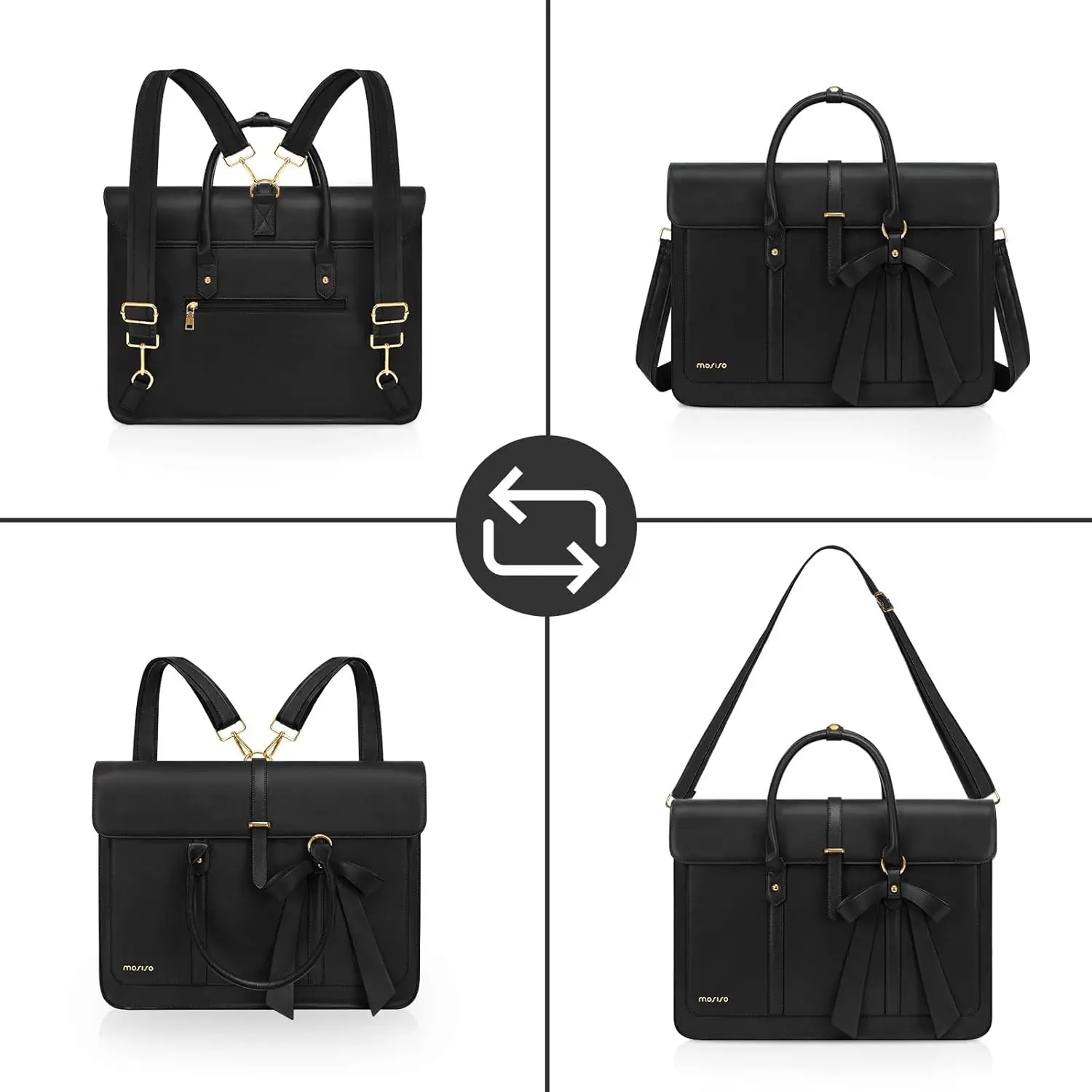
These designs acknowledge that modern professionals move fluidly between environments, requiring accessories that function appropriately across various contexts. The roll-top format offers particular advantages in this space, as its variable capacity accommodates both minimal everyday carry and occasional expanded needs.
Durability Engineering and Construction Methods
The longevity of a leather roll-top backpack depends largely on construction techniques that address inevitable stress points:
- Shoulder strap attachments reinforced with bar-tacking, rivets, or additional leather layers
- Bottom panels double-layered or reinforced to withstand setting down on various surfaces
- Roll-top edges finished with protective binding or folded construction to prevent stretching
- Strategic reinforcement at all corners and high-stress transition points
- Stitching density of 5-7 stitches per inch (2-3 per cm) at load-bearing seams
Edge finishing significantly impacts both aesthetics and durability. Premium designs utilize burnishing (polishing the edge to create a smooth, sealed surface) or edge painting (applying flexible edge sealer) rather than simple cutting. These techniques prevent fraying and moisture infiltration that can compromise structural integrity.
The comparison between roll-top backpacks and zippered styles often highlights how proper construction of the roll mechanism creates a more durable closure system with fewer mechanical failure points than traditional zippers.
Quality construction should balance durability with weight considerations. Excessive reinforcement creates unnecessary bulk, while insufficient reinforcement leads to premature failure. Premium designs achieve this balance through strategic reinforcement—applying additional materials only where stress testing indicates they’re needed.
Selecting the Ideal Leather Roll-Top Backpack Design
Finding the perfect leather roll-top backpack requires matching design features to your specific needs and usage patterns:
For daily commuting:
Look for moderately sized designs (18-22 liters) with dedicated laptop protection, easy-access external pockets for transit cards, and comfortable carrying systems designed for daily use. Water resistance should be prioritized if you commute in variable weather conditions.
For frequent travel:
Seek larger capacity (25-35 liters) with security features like hidden pockets, RFID protection, and luggage pass-through sleeves. Comfort features become even more important, as do internal organization systems that maximize packing efficiency.
For style-conscious users:
Focus on clean designs with distinctive leather character, thoughtful proportions, and hardware that complements your personal style. Consider how the leather will age and develop patina based on your regular activities.
When evaluating construction quality, examine:
– Stitching consistency and density at stress points
– Edge finishing techniques on all exposed leather edges
– Hardware attachment methods, particularly at load-bearing points
– Interior seam finishing that prevents fraying and unraveling
Understanding key features to look for in roll-top backpacks helps you make an informed decision based on both aesthetic preferences and practical requirements.
14 Inch Leather Laptop Backpack, Brown Leather Backpack, Men's Leather Backpack, Vintage Leather Backpack
Price range: $177.28 through $199.12 Select options This product has multiple variants. The options may be chosen on the product pageCarry On Leather Backpack, Roll Top Leather Backpack
Price range: $77.76 through $96.48 Select options This product has multiple variants. The options may be chosen on the product page17 Inch Leather Laptop Backpack, Men's Leather Travel Backpack, Men's Leather Work Backpack
Price range: $106.28 through $143.88 Select options This product has multiple variants. The options may be chosen on the product page- Price range: $80.72 through $108.04 Select options This product has multiple variants. The options may be chosen on the product page
Luxury Leather Backpack, Small Leather Backpack, Women's Leather Backpack
Price range: $137.48 through $138.28 Select options This product has multiple variants. The options may be chosen on the product pageDesigner Women's Backpack, Luxury Leather Backpack
Holographic Geometric Laser Diamond PU Leather Women’s Fashion Backpack with Glow-in-the-Dark Design$112.20 Select options This product has multiple variants. The options may be chosen on the product page
Why Invest in Quality Design: Beyond Aesthetics
The value proposition of a premium leather roll-top backpack extends far beyond immediate visual appeal:
- Long-term economy: Quality leather backpacks often remain functional for decades with proper care, reducing the “cost per use” to pennies per day—far less than replacing inferior bags every 1-2 years.
- Environmental responsibility: Investing in durable goods directly counters the disposable consumer culture that contributes significantly to waste streams.
- Evolving aesthetics: Unlike synthetic materials that degrade and look shabby with age, quality leather develops character through patina, often looking more appealing after years of use.
- Adaptability: Well-designed roll-top backpacks accommodate changing needs, from career transitions to new hobbies to family responsibilities.
The psychological satisfaction derived from using well-crafted objects also deserves consideration. Many users report genuine pleasure in interacting with premium luxury leather backpacks that function flawlessly and improve aesthetically over time—a stark contrast to the frustration of dealing with failing zippers, fraying seams, or compromised functionality.
Is a Leather Roll-Top Backpack Right for Your Lifestyle?
Consider these questions to determine if a leather roll-top backpack aligns with your needs:
Do you value versatility in your daily carry solution?
Roll-top designs excel at adapting to variable contents and provide weather protection that fixed-capacity bags cannot match.
Are you willing to perform basic leather maintenance?
Quality leather requires occasional conditioning (typically 2-4 times annually) to maintain optimal appearance and performance. This minimal maintenance yields significant benefits in longevity and character development.
Do you appreciate products that improve with age?
Leather develops a unique patina based on how you use it, creating a personal item that tells your story through subtle changes in texture and color.
Do you need a bag that transitions between environments?
Roll-top leather backpacks bridge casual and professional settings better than most alternatives, functioning appropriately whether you’re in a boardroom or a coffee shop.
For most users, the combination of adaptability, durability, and timeless style makes leather roll-top backpacks an excellent investment. Their ability to serve multiple purposes while developing character over time positions them as standout options in an increasingly disposable marketplace.

